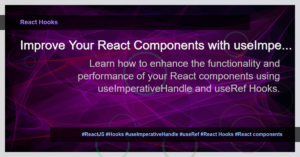Introduction
Debugging and troubleshooting are important skills for any developer, especially when working with complex frameworks like ReactJS. In this article, we will explore the process of troubleshooting a ReactJS application issue and provide useful tips to effectively debug and fix bugs in your code.
Understanding the Problem
The first step in troubleshooting a ReactJS application is to clearly understand the problem at hand. This involves gathering information about the issue, reproducing it if possible, and identifying the specific error or unexpected behavior.
To gather information, you can start by asking the following questions:
- What is the expected behavior?
- What actually happens when the issue occurs?
- Are there any specific error messages or console logs?
- Does the issue occur consistently or sporadically?
- Are there any specific steps to reproduce the issue?
By answering these questions, you can gain a better understanding of the problem and narrow down the potential causes.
Examining the Code
Once you have a clearer understanding of the problem, the next step is to examine the relevant code. This includes delving into the components, functions, and data flow involved in the affected area of your application.
To effectively examine the code, you can follow these steps:
- Identify the relevant components or files related to the issue.
- Review the code logic and algorithms used in those components.
- Look for potential areas where the bug or unexpected behavior might be occurring.
- Use console.log statements or debugging tools to track the flow of data and identify any abnormalities.
By thoroughly examining the code, you can pinpoint the exact location and cause of the issue.
Isolating the Issue
Once you have identified the potential cause of the issue, the next step is to isolate it. This involves creating a minimal, reproducible example that isolates the problem and removes any unnecessary dependencies or complexities.
To isolate the issue, you can follow these steps:
- Strip away any unrelated code or features that are not essential to reproducing the issue.
- Create a minimal, standalone version of the affected code or component.
- Test the isolated code in a controlled environment to reproduce the issue consistently.
By isolating the issue, you can focus on the specific code or component causing the problem, making it easier to fix.
Finding the Solution
Now that you have isolated the issue, it’s time to find a solution. This involves analyzing the cause of the problem, debugging the code, and implementing the necessary fixes or workarounds.
To find a solution, you can follow these steps:
- Analyze the code logic and identify any logical or syntax errors.
- Utilize debugging tools like the React DevTools or browser developer tools to track down and track the flow of data.
- Test and verify potential solutions in the isolated code to ensure they resolve the problem.
- Implement the fixes or workarounds in the production code.
By carefully debugging and implementing the necessary fixes, you can resolve the issue and improve the stability of your ReactJS application.
Conclusion
Troubleshooting and fixing bugs in a ReactJS application can be challenging, but by following the right process and using effective debugging techniques, you can effectively resolve any issues that arise.
In this article, we discussed the steps involved in troubleshooting a ReactJS application issue. By understanding the problem, examining the code, isolating the issue, and finding the solution, you can successfully debug and fix bugs in your ReactJS codebase.
Remember to always test your code thoroughly after making any changes and document the troubleshooting process for future reference.
Happy debugging!









